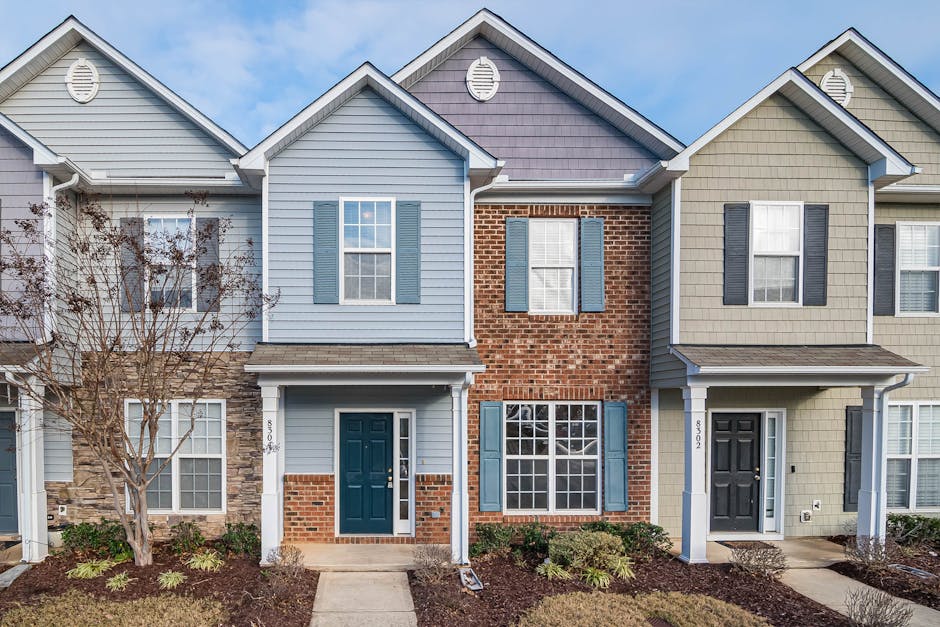Slow living is more than a lifestyle trend—it’s a transformative mindset that invites us to pause, reflect, and align our daily choices with what truly matters. In a world that often glorifies busyness, adopting slow living can be a radical act of self-care and intentionality. At Style QA, we believe that living with purpose and insight begins with slowing down, savoring the present, and making space for the things that enrich our lives.
What Is Slow Living? Understanding the Essence

Photo by Vincent M.A. Janssen on Pexels
Slow living is a conscious approach to life that emphasizes quality over quantity, mindfulness over mindlessness, and intention over impulse. At its core, slow living encourages us to curate a more meaningful and deliberate lifestyle—one that reflects our deepest values and priorities. This philosophy is not about doing everything at a snail’s pace, but rather about making thoughtful choices that foster fulfillment and well-being.
The roots of slow living can be traced to the broader slow movement, which began as a response to the fast-paced, efficiency-driven culture of modern society. From slow food to slow fashion, this movement advocates for practices that honor craftsmanship, sustainability, and connection. By embracing slow living, we reclaim our time, attention, and energy, redirecting them toward experiences and relationships that nourish us.
Slow living is about:
- Being present in the moment
- Prioritizing meaningful activities
- Reducing unnecessary stress and clutter
- Building deeper connections with ourselves, others, and the world around us
This mindful approach to life helps us break free from the cycle of constant rushing and multitasking, allowing us to experience greater satisfaction and joy in everyday moments.
The Benefits of Slow Living: Why It Matters

Photo by Vincent M.A. Janssen on Pexels
Choosing slow living can bring profound benefits to every aspect of our lives. Many people report feeling less stressed, more fulfilled, and better connected to their surroundings when they intentionally slow down. Here are some of the key advantages:
- Reduced Stress: Slowing down helps us manage stress more effectively by allowing us to breathe, decompress, and approach challenges with a calmer mindset. Instead of reacting impulsively, we gain the space to respond thoughtfully to life’s demands.
- Improved Mental Health: By focusing on the present and letting go of distractions, slow living fosters mindfulness and emotional resilience. It encourages us to celebrate small moments, enhancing our sense of gratitude and contentment.
- Better Physical Health: A slower pace often means more time for nourishing activities like cooking wholesome meals, spending time outdoors, and engaging in gentle movement—all of which support overall well-being.
- Stronger Relationships: When we are fully present with others, our connections deepen. Slow living invites us to listen actively, communicate authentically, and invest in meaningful relationships.
- Greater Creativity and Purpose: By making space for reflection and inspiration, slow living nurtures our creative potential and helps us align our actions with our values.
Ultimately, slow living empowers us to live with greater intention, bringing clarity and purpose to our everyday choices.
Principles of Slow Living: The Foundations of a Mindful Lifestyle

Photo by Vincent M.A. Janssen on Pexels
To truly embrace slow living, it’s helpful to understand its guiding principles. These foundational ideas can serve as touchstones as you navigate your own journey toward a slower, more intentional life.
- Mindfulness: Cultivate awareness of your thoughts, feelings, and surroundings. Mindfulness allows you to appreciate the present moment and make conscious decisions about how you spend your time and energy.
- Simplicity: Simplify your environment and routines by letting go of excess—whether it’s physical clutter, overcommitted schedules, or draining relationships. Focus on what adds value and joy to your life.
- Intentionality: Make deliberate choices that reflect your values and aspirations. Instead of operating on autopilot, pause to consider what truly matters to you.
- Connection: Foster meaningful relationships with yourself, others, and nature. Slow living is about nurturing community, empathy, and a sense of belonging.
- Gratitude: Practice gratitude for the small moments and simple pleasures. Recognizing what you have shifts your focus from scarcity to abundance.
By integrating these principles into your daily life, you can create a supportive framework for sustainable well-being and personal growth.
How to Start Slow Living: Practical Steps for Everyday Life

Photo by Vincent M.A. Janssen on Pexels
Transitioning to a slow living lifestyle doesn’t require a complete overhaul. Small, intentional changes can have a significant impact over time. Here are practical steps to help you begin your slow living journey:
- Assess Your Priorities: Reflect on what matters most to you. Identify the activities, relationships, and values that bring you joy and fulfillment.
- Edit Your Commitments: Learn to say no to obligations that drain your energy or don’t align with your priorities. Create space in your schedule for rest and reflection.
- Create Mindful Routines: Establish daily rituals that ground you, such as morning meditation, mindful eating, or evening walks. These routines help anchor your day and promote presence.
- Disconnect to Reconnect: Limit digital distractions by setting boundaries around technology use. Spend more time offline, engaging in activities that foster creativity and connection.
- Embrace Slow Food and Sustainable Living: Prepare meals from scratch, savoring the process and flavors. Support local producers and choose sustainable options whenever possible.
- Spend Time in Nature: Make time to be outdoors, whether it’s a walk in the park or gardening. Nature offers a powerful antidote to stress and a reminder of life’s rhythms.
Remember, slow living is a personal journey—there is no one-size-fits-all approach. The key is to experiment with what works for you and make adjustments as needed.
Overcoming Challenges: Navigating Obstacles on the Slow Living Journey

Photo by Vincent M.A. Janssen on Pexels
While the benefits of slow living are compelling, adopting this lifestyle can come with challenges. Modern society often equates busyness with productivity, making it difficult to slow down without guilt or resistance. Here’s how to navigate common obstacles:
- External Pressures: Friends, family, or colleagues may not understand your desire to slow down. Communicate your intentions clearly and seek support from like-minded individuals or communities.
- Internal Resistance: It’s normal to feel uncomfortable when breaking old habits. Practice self-compassion and remind yourself of the reasons you chose this path.
- Time Constraints: If your schedule feels overwhelming, start with small changes. Even five minutes of mindfulness or a single tech-free meal can make a difference.
- Perfectionism: Slow living isn’t about getting it “right”—it’s about progress, not perfection. Allow yourself to experiment and learn along the way.
By anticipating these challenges and approaching them with patience, you can build resilience and stay committed to your slow living journey.
Slow Living and Style: Expressing Purpose Through Everyday Choices

At Style QA, we believe that slow living and personal style are deeply connected. The way we dress, decorate our homes, and curate our surroundings can be powerful expressions of our values and intentions. Embracing a slow living approach to style means prioritizing quality, sustainability, and authenticity over fleeting trends.
- Mindful Wardrobe: Build a wardrobe with timeless, versatile pieces that reflect your personality and values. Choose quality over quantity, and support brands that prioritize ethical and sustainable practices.
- Intentional Spaces: Create living spaces that foster calm and creativity. Surround yourself with objects that have meaning and purpose, and let go of items that no longer serve you.
- Purposeful Consumption: Practice conscious consumption by considering the impact of your purchases. Invest in items that add value to your life, and avoid impulse buying.
- Personal Expression: Use style as a tool for self-expression and empowerment. Celebrate your uniqueness and make choices that resonate with your authentic self.
By aligning your style choices with the principles of slow living, you can cultivate a sense of harmony and intention in every aspect of your life.
Incorporating Slow Living Into Family and Community Life

Photo by Curtis Adams on Pexels
Slow living isn’t just an individual pursuit—it can also strengthen families and communities. When we slow down together, we create opportunities for deeper connection, shared experiences, and collective well-being.
- Family Rituals: Establish regular family meals, game nights, or outdoor adventures. These rituals foster togetherness and create lasting memories.
- Community Engagement: Get involved in local initiatives, volunteer work, or neighborhood gatherings. Building relationships with those around you enhances your sense of belonging and purpose.
- Shared Mindfulness: Practice mindfulness as a family or group, whether through meditation, gratitude exercises, or nature walks. Shared presence strengthens bonds and supports mutual growth.
- Celebrating Traditions: Honor cultural or seasonal traditions that connect you to your heritage and community. These celebrations provide a sense of continuity and meaning.
By integrating slow living practices into your family and community life, you contribute to a culture of care, empathy, and resilience.
The Long-Term Impact: Cultivating a Life of Purpose and Insight

Photo by Vincent M.A. Janssen on Pexels
Embracing slow living is an ongoing journey—one that unfolds gradually, revealing new layers of meaning and possibility. Over time, the cumulative effects of slowing down can be transformative. You may notice:
- Greater Clarity: With less noise and distraction, your true desires and values become clearer. Decision-making becomes easier, and your life feels more aligned.
- Deepened Fulfillment: Everyday moments take on new significance. Simple pleasures—like a cup of tea, a walk in the park, or a heartfelt conversation—become sources of joy.
- Resilience and Adaptability: By building a foundation of mindfulness and intentionality, you become better equipped to navigate life’s challenges with grace and confidence.
- Lasting Legacy: The choices you make today shape the world you leave for future generations. Slow living encourages stewardship, sustainability, and a sense of responsibility to others.
At Style QA, we invite you to explore the art of slow living as a pathway to a more purposeful and insightful life. Whether you’re just beginning or deepening your practice, remember that every small step counts. By slowing down, you open yourself to a richer, more meaningful existence—one that is truly styled with purpose and answered with insight.
Sources
- https://slowlivingldn.com/what-is-slow-living/
- https://www.psychologytoday.com/us/blog/out-of-the-darkness/202407/living-slowly
- https://slowlivingkitchen.com/slow-living/
- https://amandacook.me/top-5-benefits-of-slow-living/
- https://xojulessimon.com/what-is-slow-living/

